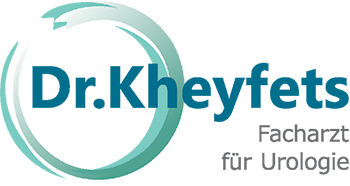Extracorporeal Shock Wave Lithotripsy (ESWL)
Since the 1980s, ESWL has been the most important non-invasive procedure for treating urinary stones up to a length of 2 cm. In this procedure, a shock wave (special sound wave) is generated outside the body (extracorporeal) in a generator and focused on the stone using X-ray or ultrasound guidance. The treatment is mainly performed on an outpatient basis. Modern ESWL devices allow the energy to be focused very precisely, so that pain therapy (analgesia) is rarely necessary. During the procedure, the patient lies on a special therapy table.
The stone is precisely positioned, and the therapy unit is coupled to the skin. To ensure that the sound waves pass to the stone unimpeded and without energy loss, the coupling site is moistened with water. During the treatment, rhythmic noises from the generator are heard and slight stings are felt. A therapy session usually lasts 30 to 40 minutes. Afterward, the urine should be filtered for some time to catch any stone fragments. Not all stones can be treated with ESWL. Hard stones, non-radiopaque ureter stones, and stones in the lower calyx group of the kidney are particularly unsuitable for this therapy. Disadvantages and (rare) complications of ESWL also include: the need for multiple sessions, colics during the passage of large stone fragments, and kidney hematomas.
I perform ESWL at the Landesklinikum Wiener Neustadt. If interested, please schedule an appointment in my practice and bring all findings and X-ray images (CDs) with you.



